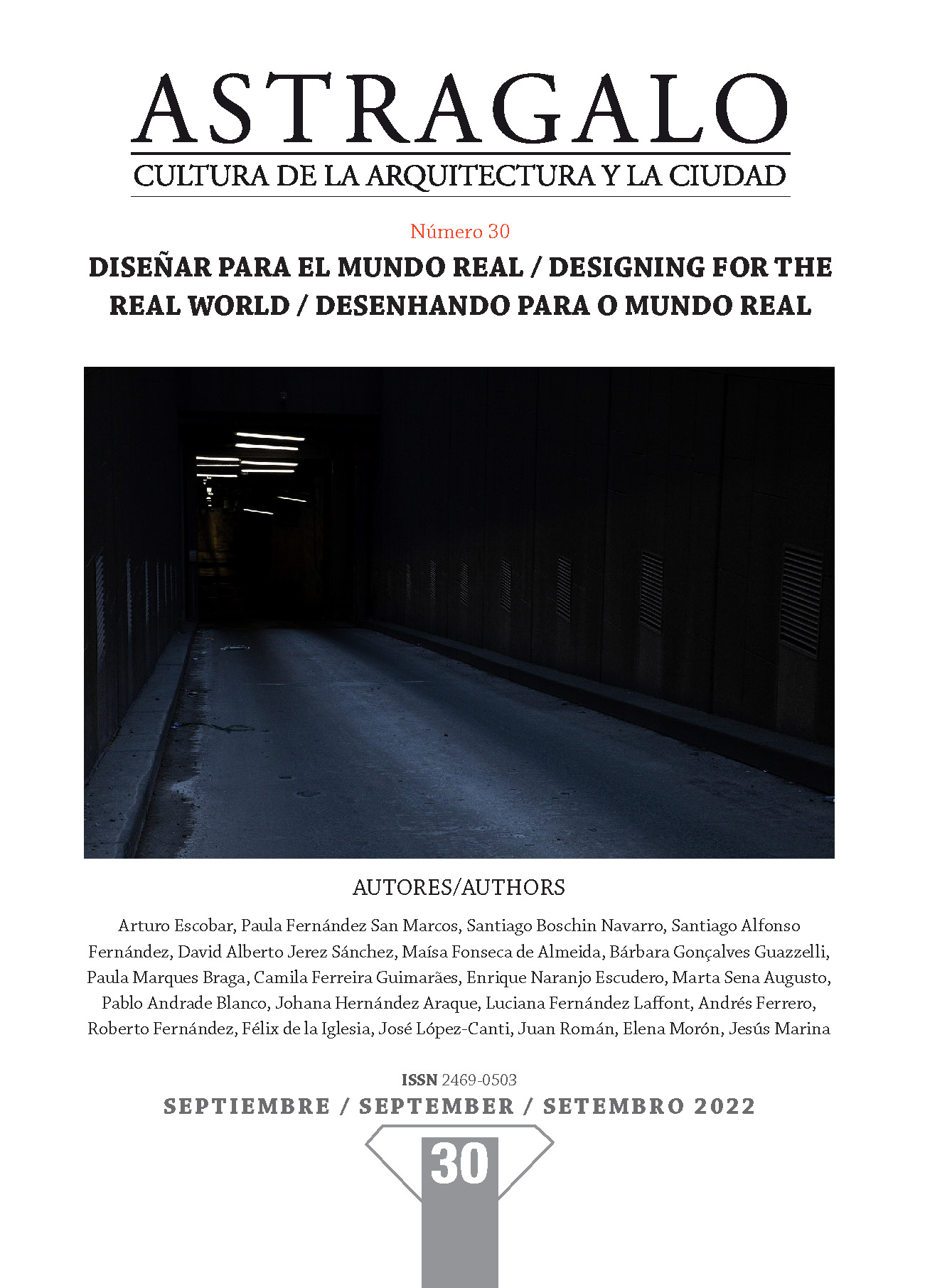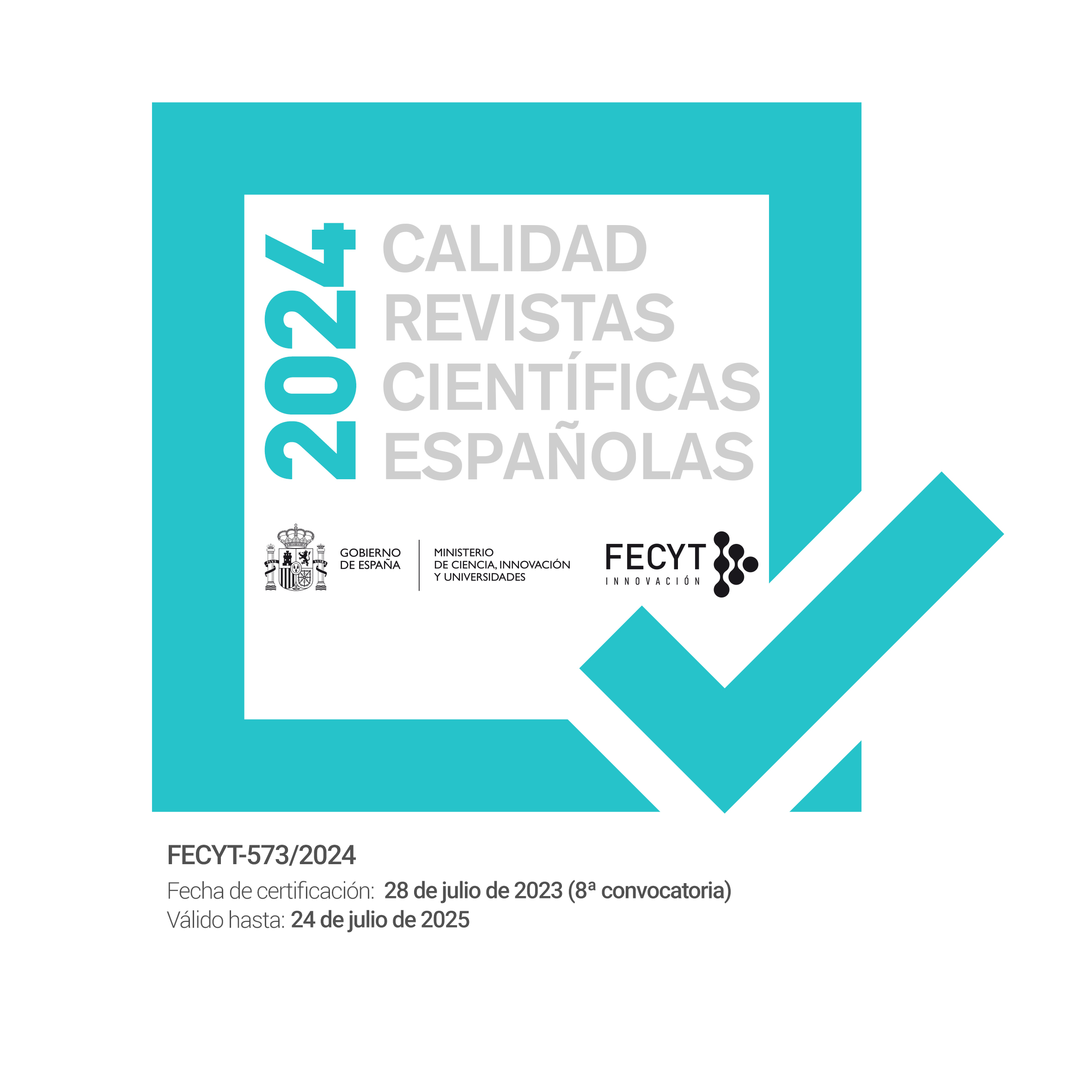Disorientation proposal
Some considerations away from the dispositional view of Design
DOI:
https://doi.org/10.12795/astragalo.2022.i30.05Keywords:
dasein ist design, world-making, non-linear time, indetermination of design, the subjectAbstract
What realities are activated when we abstract our gaze and gestures from the lights of our time is a question that summons the ideas that follow. Such an ignition seems to be possible from multiple positions: the one proposed here is a navigation of the possibilities, or paths, that remain for a Design stifled by the dispositions of modern progress. Stripped of guiding determinations, what should be the subjects and occupations of design in the world?
Our current ways of shaping the world, how we understand and approach the real, seem impossible to transform. Various paths seem to open as the density of the project dissolves: the nostalgic temptation, the alleged absolute objectivity of data, reactionary design. However, in a scenario like the current one where certainty or forecasts are overshadowed by issues such as the political and environmental crisis, or our submission in the era of hyper-information, a shift of the gaze to territories other than those assumed can reveal other potencies.
Even from the most unsuspected places - a collapsed delta, a short story - we can begin to pay attention to the shadows that slip out of the corner of our eyes and find new ways of understanding how we design. Also, other spatialities from which to reconsider a new design culture. Being able to work attentively with our given environment and reconsider our project for the future - constructing new ways of narrating ourselves - can result in a total disorientation, an absence with respect to our time that dissolves the limits of what we understand as the real world.
Downloads
References
Agamben, Giorgio (2005). Lo abierto. El hombre y el animal. Valencia: Pre-Textos.
Agamben, G. (2006). Homo Sacer. El poder soberano y la nuda vida.
Agamben, G. (2008). ¿Qué es lo contemporáneo?
Bauman, Z. (2018). Retrotopia. Revista Española de Investigaciones Sociológicas (REIS), 163(163), 155-158.
Baudrillard, J. (1997) El otro por sí mismo. Anagrama, Barcelona.
Calasso, Roberto, and Edgardo (trad.) Dorby. 2018. La Actualidad Innombrable. Barcelona: Anagrama.
Canguilhem, G. (1971). Lo normal y lo patológico. (S. V. Argentina, Ed.)
Colomina, Beatriz. 2016. Are We Human?: Notes on an Archaeology of Design. Book. Edited by Mark Wigley. Zurich: Lars Müller.
Cortázar, Julio. 2000. Historias de Cronopios y de Famas. Buenos Aires: Alfaguara.
Deleuze, G. (1999). Post-scriptum a las sociedades de control en Conversaciones. Valencia, Pre-Textos
Deleuze, G., Guattari, P. F. (1997). Mil mesetas. Pre-textos.
Déotte, Jean-Louis. 2012. ¿Qué Es Un Aparato Estético? Benjamin, Lyotard, Ranciére. Santiago de Chile: Ediciones Metales Pesados.
Escobar, Arturo. 2017. Autonomía y Diseño. La Realización de Lo Comunal. 1a ed. Ciudad Autónoma de Buenos Aires: Tinta Limón.
Eisenman, P. (1985). Moving arrows, Eros and other errors., 66–81. En Castillos de Romeo y Julieta.
Foucault, M. (1976). Vigilar y Castigar: nacimiento de la prisión. (S. XXI, Ed.) (2002nd ed.).
Foucault, M. (1982). Las palabras y las cosas: una arqueología de las ciencias humanas. Siglo xxi.
Foucault, M. (2001). Los Anormales. Fondo De Cultura Económica de Argentina.
Illich, I. (1975). Nemesis. La expropiación de la salud. (B. Editores, Ed.).
Jalón Oyarzun, L. (2017) Excepción y cuerpo rebelde: lo político como generador de una arquitectónica menor. Tesis doctoral. ETS Arquitectura UPM. Madrid
Jameson, F., & Usanos, D. S. (2012). El postmodernismo revisado. Abada.
Jullien, F. (2010). De lo universal, de lo uniforme, de lo común y del diálogo entre las culturas. Siruela.
Latour, Bruno. 2008. “A Cautious Prometheus? A Few Steps Toward a Philosophy of Design: (With Special Attention to Peter Sloterdijk).” In ”Networks of Design”, Annual International Conference of the Design History Society, 2–10. Cornwall: University College Falmouth.
Latour, B. (2007). Nunca fuimos modernos. Ensayo de antropología simétrica.
Latour, B (2017). Cara a cara con el planeta.
Nancy, J. L., & Piazza, V. (2006). El intruso. Amorrortu.
Polo, A. Z. (2022). El fin de las maneras. Nuevas intolerancias para después de la posverdad: Posthumanismo, Precisión y Conservación. Croquis, (213), 3.
Rahm, P. (2021). Escritos climáticos. Barcelona: Puente Editores.
Rahm, P. (2020). L’ architecture est l’ art de bâtir des climats. Medios de comunicación de la AOC. 05.12.2020
Ranciere, Jacques. “¿Es la política solo policía?”, entrevista con Jean-Paul Monferran, L’humanité, 1 de junio 1999. El tiempo de la igualdad. Diálogos sobre política y estética (Barcelona: Herder, 2011), 74. Eisenman, P. (1985). Moving arrows, eros and other errors., 66–81.
Sebald, W.G., and Miguel (trad.) Sáenz. 2020. Austerlitz. 12 ed. Barcelona: Anagrama.
Sloterdijk, P. (2003). Esferas I. Burbujas. Madrid: Siruela, 1.
Sloterdijk, P. (2020). Las epidemias políticas. Kindle.
Sloterdijk, Peter, and Isidoro Reguera (trad.). 2017. Los Hijos Terribles de La Edad Moderna. Madrid: Siruela, Biblioteca de Ensayo.
Stoner, Jill. 2018. Hacia Una Arquitectura Menor. Madrid: Barthebooth.
Tiqqun 1 (2013). Teoría del Boom. Disponible en: https://tiqqunim.blogspot.com/2013/01/bloom.htm
Tiqqun 2 (2014). Tesis sobre la comunidad terrible. Disponible en: https://tiqqunim.blogspot.com/2014/01/terrible.html
Vattimo, G. (2010). Adiós a la verdad. Gedisa
Downloads
Published
How to Cite
Issue
Section
License
Copyright (c) 2022 Paula Fernández San Marcos, Santiago Boschin Navarro, Santiago Manuel Alfonso Fernández

This work is licensed under a Creative Commons Attribution-NonCommercial-ShareAlike 4.0 International License.


















